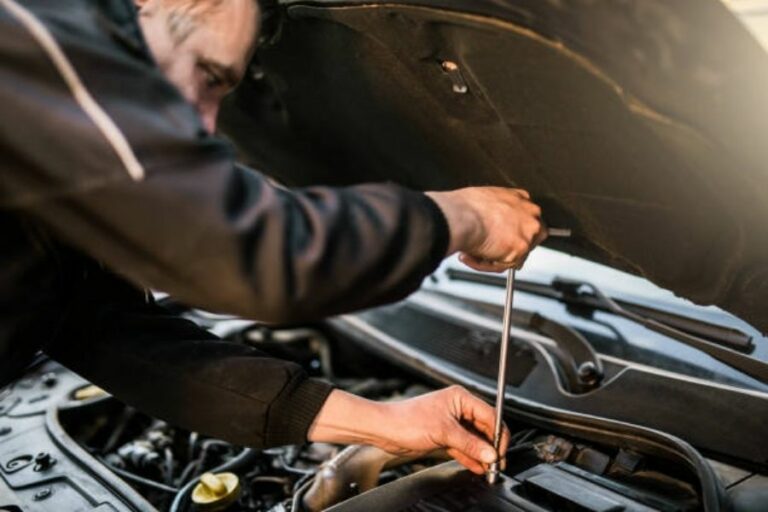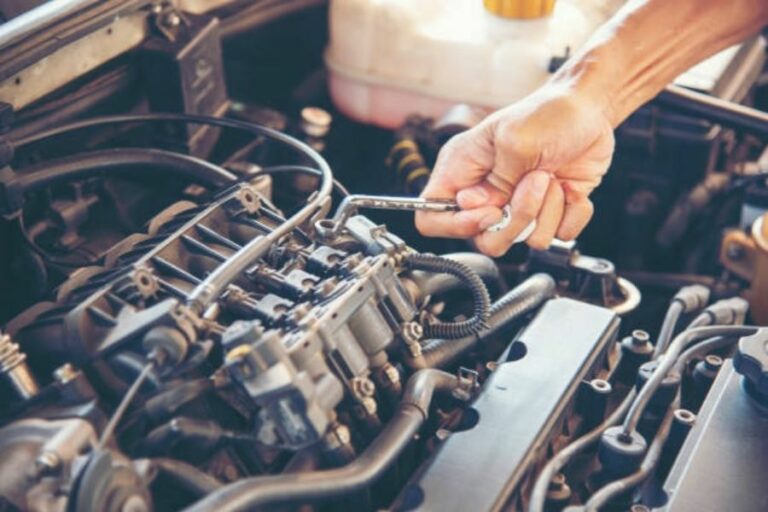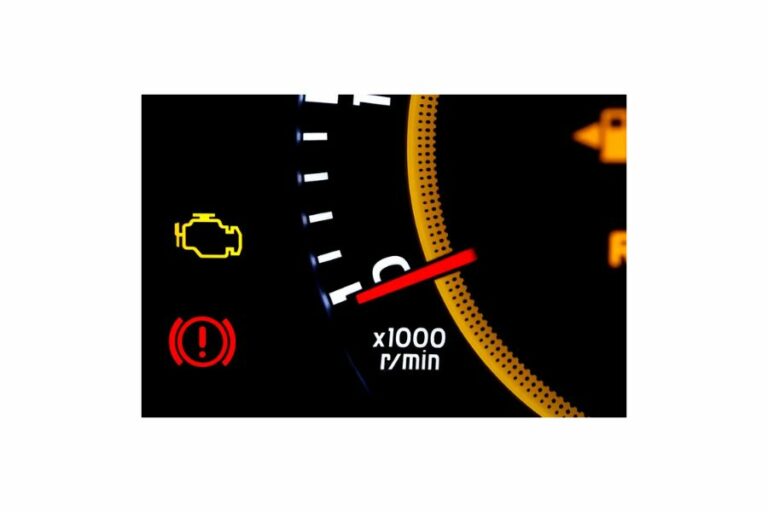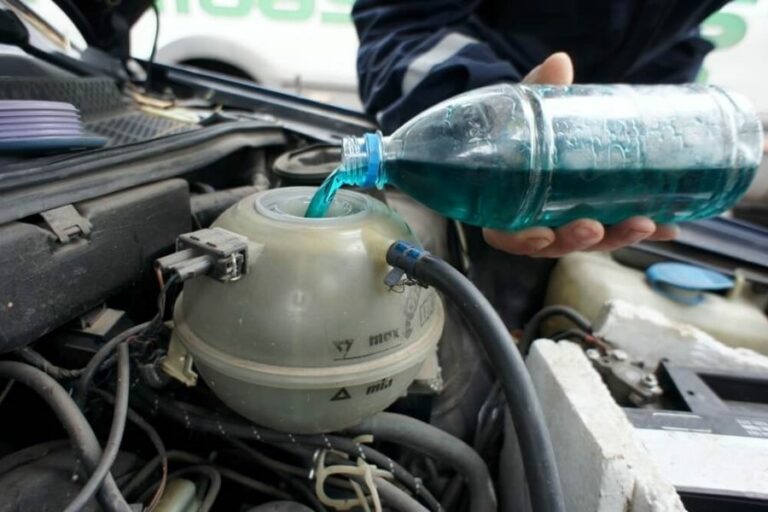9 Symptoms of a Defective Fuel Pump Driver Module
When it comes to keeping fuel pressure and delivery to the engine consistent, it’s up to the fuel pump driver module to manage the electrical power supply to the fuel pump.
So, if the fuel pump driver module gets defective, it may happen for various reasons, including overheating or contamination. As a result, your vehicle’s engine will stop working.
So in this article, we will discuss 9 major fuel pump control module failure symptoms and also give some preventive measures.
Read Also: How Does A Car Act When The Fuel Pump Is Going Out?
9 Most Common Fuel Pump control module failure symptoms:
Some warning indicators of a failed fuel pump driver module include starting problems, engine stalling, and power surges. If you’re able to identify these signs, you can stop the condition from getting worse and have it fixed.
So here are some bad fuel pump driver module symptoms. If you face any of these, solve them on time.
Symptom 1: Stalling Engine

It’s terrifying when your vehicle suddenly stops moving, and it will be disastrous if you don’t do anything about it. A faulty fuel pump driver module may be contributing to your stalling problems.
If you notice that your vehicle started stalling or failed to start, that means your vehicle’s fuel pump driver module is defective. When a fuel pump driver module gets defective, it will fail to provide proper voltage to the engine.
As a result, your vehicle’s engine will overheat and not get an adequate amount of fuel to run.
In this situation, we will advise you to change the fuel pump driver module. We hope that it will resolve your problem.
Symptom 2: Engine Misfires
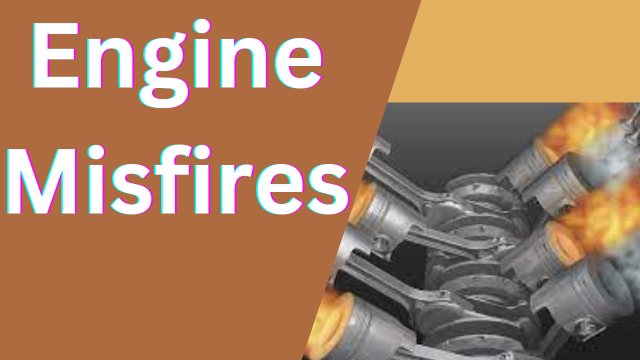
A malfunctioning fuel pump driver module may cause the engine to misfire. The pump may not produce adequate pressure if the voltage supplied by the fuel driver module is insufficient, which could result in an engine running low or misfiring.
If you ever notice this kind of symptom, we will suggest that you go to a mechanic.
Symptom 3: Engine Surging

Engine surges if the fuel pump driver module is malfunctioning. When the fuel pump driver module isn’t functioning properly, it can result in the fuel pump delivering an inconsistent amount of fuel to the engine.
This irregularity in fuel delivery can cause the engine to surge or hesitate while accelerating.
To determine the problem, you have to use a fuel pressure gauge. If the fuel pressure is low, that means there’s a problem with the fuel pump driver module system. In this situation, going to a professional will be a good option.
Read Also: Fuel Pump Not Priming – What’s The Likely Cause and Fix?
Symptom 4: Rough Idling
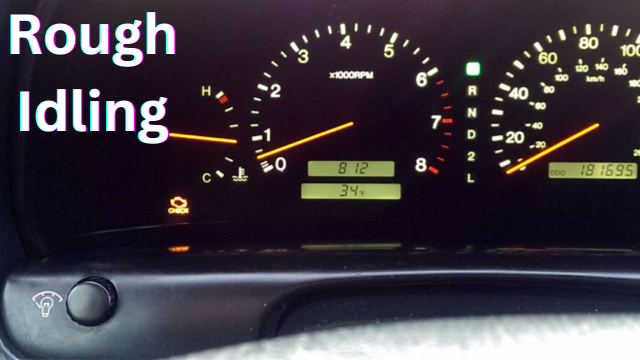
If your vehicle’s fuel pump driver module is not functioning correctly, it may cause sputtering or rough idling.
Difficulty in maintaining a smooth idle is a warning sign of a faulty fuel pump driver module, among other potential causes.
If cleaning your fuel injection system and replacing the fuel filter doesn’t resolve the issue, we recommend checking the fuel pump.
Symptom 5: Heavy Black Smoke
When you start the engine, you might see a lot of smoke coming out of your car. This heavy smoke is a result of a fuel pump malfunction.
Neglecting this issue will only lead to worsening consequences for your vehicle and the environment. The longer you ignore it, the more severe the impact will become.
To fix this problem, a diagnosis must be performed. Another solution is to replace the fuel injector.
Symptom 6: Lack Of Performance
A faulty fuel pump module can cause your vehicle to lose power, making it seem like the car is not responding to acceleration efforts as it should.
This issue can be caused by clogged vehicle components, but the most common cause is fuel pump problems.
Sometimes the fuel pump driver module can malfunction for other fuel pump components. So, going to a mechanic would be an excellent option for you.
Symptom 7: Problem In Fuel Economy
When the fuel pump driver module is faulty, you may observe that your vehicle’s engine is consuming more fuel than usual.
This problem happens because the fuel pump delivers excessive fuel into the engine due to a malfunctioning fuel pump driver module. Consequently, you will have to refill your fuel tank more frequently.
Read Also: Honda Dual Pump Fluid Substitute – Experts Explanation
Symptom 8: High Temperature
A failing fuel pump can cause an increase in engine temperature. You might have a fuel pump problem if your vehicle’s temperature gauge consistently shows higher readings than normal.
Symptom 9: Acceleration Issues
If you experience problems with your vehicle’s acceleration, then the main reason behind this problem is a failing fuel pump. A vehicle may struggle to accelerate if the fuel pump cannot deliver enough fuel.
These are all the major symptoms of defective fuel pump driver module. Below are some preventing measure for fuel pump control module failure symptoms.
Some Tips For Preventing Fuel Pump Driver Module Failure
Everyone wishes they could drive a car without ever having a single issue. It’s possible to drain a substantial chunk of your savings due to the huge costs of repairs.
Taking precautions can eliminate the danger and relieve you of the problems we discussed earlier.
Avoid Keeping Low Fuel In The Fuel Tank
People frequently drive their cars with low fuel levels. When you drive your car with low fuel, a significant portion of the fuel tank is exposed, overheated, and begins to deteriorate.
Maintaining an appropriate fuel level in your tank is something we will recommend.
We expect fewer fuel-related issues and increased vehicle longevity by adhering to these guidelines.
Use Quality Fuel
If you want your vehicle’s health to always stay good, you should use good quality fuel.
When you use good quality fuel, it boosts your vehicle’s performance, won’t harm your engine, and also increases the longevity of your vehicle.
We recommend using detergent-containing fuel. Injectors, intake valves, and combustion chamber surfaces are all susceptible to carbon deposit development, but detergents maintain these regions clean and free of soot.
Read Also: Fuel Evaporation Leakage Check (Causes & Prevention)
Clean The Fuel Filter Once A Month
Although fuel system filters are installed to prevent contaminants from entering the system, debris can still make its way through them.
This problem could be due to a clogged fuel filter. When a fuel filter gets dirty, it can no longer effectively remove debris from the fuel.
We will advise you to do monthly fuel filter cleaning or a fuel filter replacement after damage prevents the debris from entering the fuel tank.
Change Oil Frequently
In many cases, people forget to get their oil changed. Your fuel pump will deteriorate if you don’t change the oil often enough.
Due to insufficient oil changes, the fuel pump will need to be repaired after being worn down by friction.
Rising temperatures caused by inadequate oil lubrication cause fuel pump motor resistance and eventual system failure. So it’s necessary to change the oil often to keep your vehicle’s health good.
Read Also: Why does the gas pump stop when my tank isn’t complete?
How do I know if my fuel pump module is bad?
There are a number of signs that may indicate that your fuel pump module is bad. Some of the most common bad fuel pump module symptoms include:
- Engine stalling: If your engine is stalling, it could be a sign that the fuel pump is not delivering enough fuel to the engine.
- Hard starting: If your car is difficult to start, it could be a sign that the fuel pump is not working properly.
- Reduced fuel economy: If you are getting less fuel economy than usual, it could be a sign that the fuel pump is not working efficiently.
- Noise from the fuel tank: If you hear a whining or buzzing noise coming from the fuel tank, it could be a sign that the fuel pump is failing.
- Check engine light: If your check engine light is on, it could be a sign of a number of problems, including a bad fuel pump.
Fuel Pump Control Module Replacement Cost:
The cost of replacing a fuel pump control module (FPCM) can vary depending on the vehicle make, model, year, and labor rates in your area. In general, you can expect to pay between $200 and $700 for the parts and labor involved in replacing an FPCM.
FAQs About bad fuel pump module symptoms
Defective fuel pump driver module issues are a common issue in automotive society. People search for answers to many questions regarding the fuel pump control module.
To the best of our ability, we will answer your queries. We hope you’ll get your answer!
Is it risky to drive if the fuel pump driver module has malfunctioned?
Driving with a malfunctioning fuel pump driver module is quite hazardous. If the fuel pump driver module is faulty, the fuel pump could lose power suddenly. So, losing power suddenly can spell disaster if you’re in a running situation.
How to diagnose a defective fuel pump driver module?
A competent mechanic can use diagnostic equipment to determine if the fuel pump driver module is malfunctioning. The fuel pump driver module and other parts of the fuel system could show symptoms of damage or wear if examined closely enough.
Can a faulty fuel pump driver module harm the engine?
A defective fuel pump driver module can damage the engine. Problems with engine performance, such as stalling or insufficient power, can occur if the fuel pump driver module does not supply enough power to the fuel pump.
Can I test the fuel pump with a multimeter?
A multimeter may test the fuel pump module by connecting a positive probe to the fuel pump connector wire and a negative probe to a metal item. If the fuel pump is good, it will show a 12 volt reading.
What would happen if the fuel pump driver module wasn’t supplying enough power to the fuel pump?
If the fuel pump driver module can’t provide power to the fuel pump, your engine will not get enough fuel to run. Resulting there will be a lack of performance and could stalling the engine

